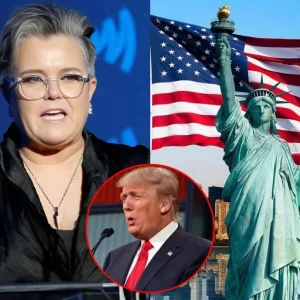The Department of Homeland Security is putting more than 500 “sanctuary jurisdictions” across the nation — including some in San Diego County — on notice that the Trump administration views them as obstructing immigration enforcement as it attempts to increase pressure on communities it believes are standing in the way of the president’s mass deportations agenda.

The department on Thursday published a list on its website of the jurisdictions and said each one will receive formal notification that the government has deemed them noncompliant and if they’re believed to be in violation of any federal criminal statutes.
San Diego County is on the list, as well as the cities of San Diego, Vista, Chula Vista and Santee.
“These sanctuary city politicians are endangering Americans and our law enforcement in order to protect violent criminal illegal aliens,” DHS Secretary Kristi Noem said in a news release.
Some local leaders seemed baffled by their inclusion.
“Vista is not a sanctuary city,” Mayor John Franklin said in a statement. The Vista City Council previously voted to support Donald Trump’s fight against California’s sanctuary policies, and the mayor asked the president to “correct this error immediately.”
“I fully support your effort to hold sanctuary jurisdictions accountable,” Franklin wrote to Trump. “Thank you for making America Safe again!”
In Santee, which is also overseen by more conservative leaders, a city spokesperson said they were “genuinely surprised” about the list. “This designation came as unexpected news, and we were not made aware of it prior to the list being published,” Bree Osborne wrote in an email. “We’re currently reviewing the situation to better understand the basis for our inclusion.”
The county as well as the cities of Chula Vista and San Diego similarly said they had not yet received notification from the federal government.
A San Diego mayoral spokesperson added that the announcement has raised “more questions than answers” as to why the city is included on the list. “Regardless of today’s announcement, the City will continue to comply with state and federal laws,” spokesperson Rachel Laing said in a statement. “We will protect the interests of our residents and retain our distinction of being one of the safest big cities in the United States.”
The Trump administration has repeatedly targeted communities, states and jurisdictions that it says aren’t doing enough to help Immigration and Customs Enforcement as it seeks to make good on President Donald Trump’s campaign promises to remove millions of people in the country illegally.
The list was compiled using a number of factors, including whether the cities or localities identified themselves as sanctuary jurisdictions, how much they complied already with federal officials enforcing immigration laws, if they had restrictions on sharing information with immigration enforcement or had any legal protections for people in the country illegally, according to the department.
California has laws in place that limit cooperation with immigration authorities, making the entire state a target. However, not every city or local government made it onto DHS’ list.
Late last year, the San Diego County Board of Supervisors voted 3-1 to adopt a policy that went further than state law. The policy bars cooperation with ICE, including the transfer of immigrants detained in local jails, unless a warrant is issued by a federal or state judge.
The policy caused a rare dispute with county Sheriff Kelly Martinez, who maintains that her office will not honor it and will continue to follow the limitations set out under state law.
That law, the California Values Act, or SB 54, which was signed in 2017, already restricts cooperation with federal immigration officials, but it still allows local agencies to notify the federal government of jail release dates and to transfer individuals to ICE under certain circumstances.
Chula Vista, San Diego County’s second-largest city, has not formally declared itself a “sanctuary city” nor adopted policies that specifically limit or prohibit its cooperation with federal immigration authorities.
In 2017, city leaders, like many others at the time, considered adopting the “sanctuary city” designation but ultimately rejected the proposal. Instead, the City Council voted to support SB 54.
Chula Vista had considered recertification by a national nonprofit as a “welcoming city,” a designation that recognizes the city’s commitment to the inclusion of immigrants, rather than the municipality affording non-citizens any unique safeguards. Instead, the city joined the organization’s network, of which the city of San Diego and several dozen other local governments across the nation also belong.
“The City complies with California law (SB 54), which limits local law enforcement’s involvement in immigration matters, which ensures our law enforcement personnel can prioritize crime prevention, response, and community trust,” a Chula Vista spokesperson said in a statement.
Trump signed an executive order on April 28 requiring the secretary of Homeland Security and the attorney general to publish a list of states and local jurisdictions that they considered to be obstructing federal immigration laws. The list is to be regularly updated.
Federal departments and agencies, working with the Office of Management and Budget, would then be tasked with identifying federal grants or contracts with those states or local jurisdictions that the federal government identified as “sanctuary jurisdictions” and suspending or terminating the money, according to the executive order.
If “sanctuary jurisdictions” are notified and the Trump administration determines that they “remain in defiance,” the attorney general and the secretary of Homeland Security are then empowered to pursue whatever “legal remedies and enforcement measures” they consider necessary to make them comply.
Communities that don’t cooperate with ICE often say they do so because immigrants then feel safer coming forward if they’re a witness to or victim of a crime. And they argue that immigration enforcement is a federal task, and they need to focus their limited dollars on fighting crime.
San Diego City Attorney Heather Ferbert said in a statement Thursday that “sanctuary policies are legal and make us all safer.”
She added that that’s why the city joined a lawsuit earlier this year with 15 other local jurisdictions across the country “to challenge federal actions against so-called ‘sanctuary cities’ that would threaten funding for critical public safety services.”
“What’s happening is a blatantly illegal attempt to sidestep the courts and bully local governments into doing ICE’s job by threatening to cut off billions in federal funding,” Ferbert said. “This funding is taxpayer money meant to serve local communities, not be held for ransom. Millions of people rely on these dollars for critical services and programs like roads and public transit, homelessness prevention, gang violence prevention, disaster relief, health care, opioid treatment, victim services and emergency response.”
In April, a federal judge issued a preliminary injunction in the case filed in San Francisco federal court that will preserve funding for now, she said.
ICE enforces immigration laws nationwide, but often seeks state and local help in alerting federal authorities of immigrants wanted for deportation and holding them until federal officers take custody.
One way that the administration seeks to enlist state and local support is through 287(g) agreements with local law enforcement agencies. Those agreements allow local law enforcement agencies to assume some immigration enforcement duties and greatly expand ICE’s capabilities. The number of those agreements has skyrocketed in just a matter of months under the Trump administration.
ICE has about 6,000 law enforcement officers — a number that has remained largely static for years — who are able to find, arrest and remove immigrants it’s targeting. By relying on local law enforcement, it can quickly scale up the number of staff available to help carry out Trump’s mass deportations agenda.
Staff writers Alexandra Mendoza, Tammy Murga, David Garrick and Blake Nelson and the Associated Press contributed to this report.
This story has been updated with statements from Vista and Santee.






